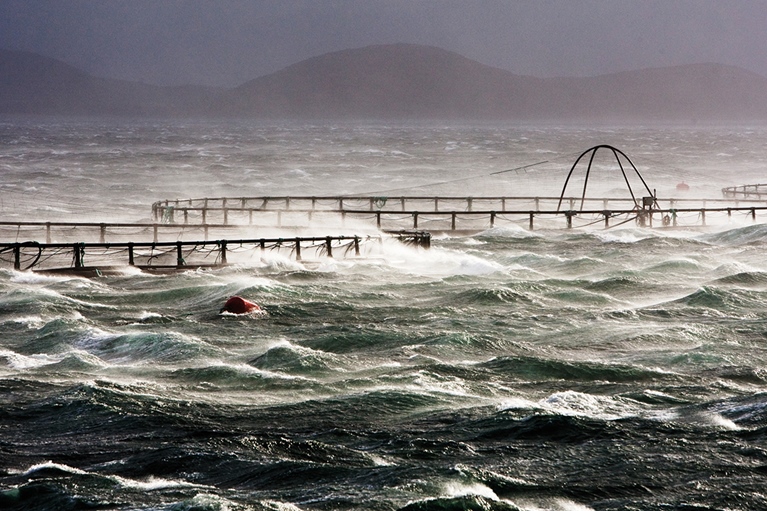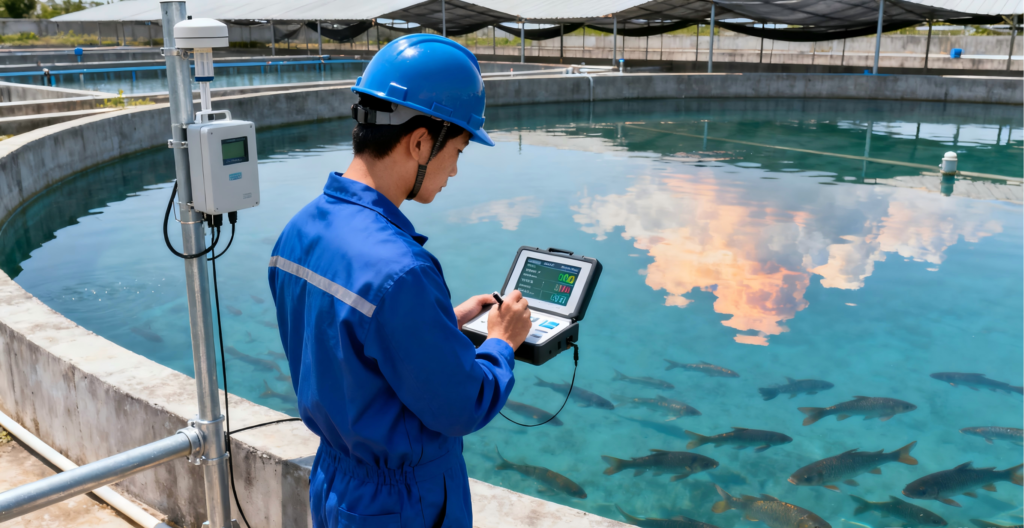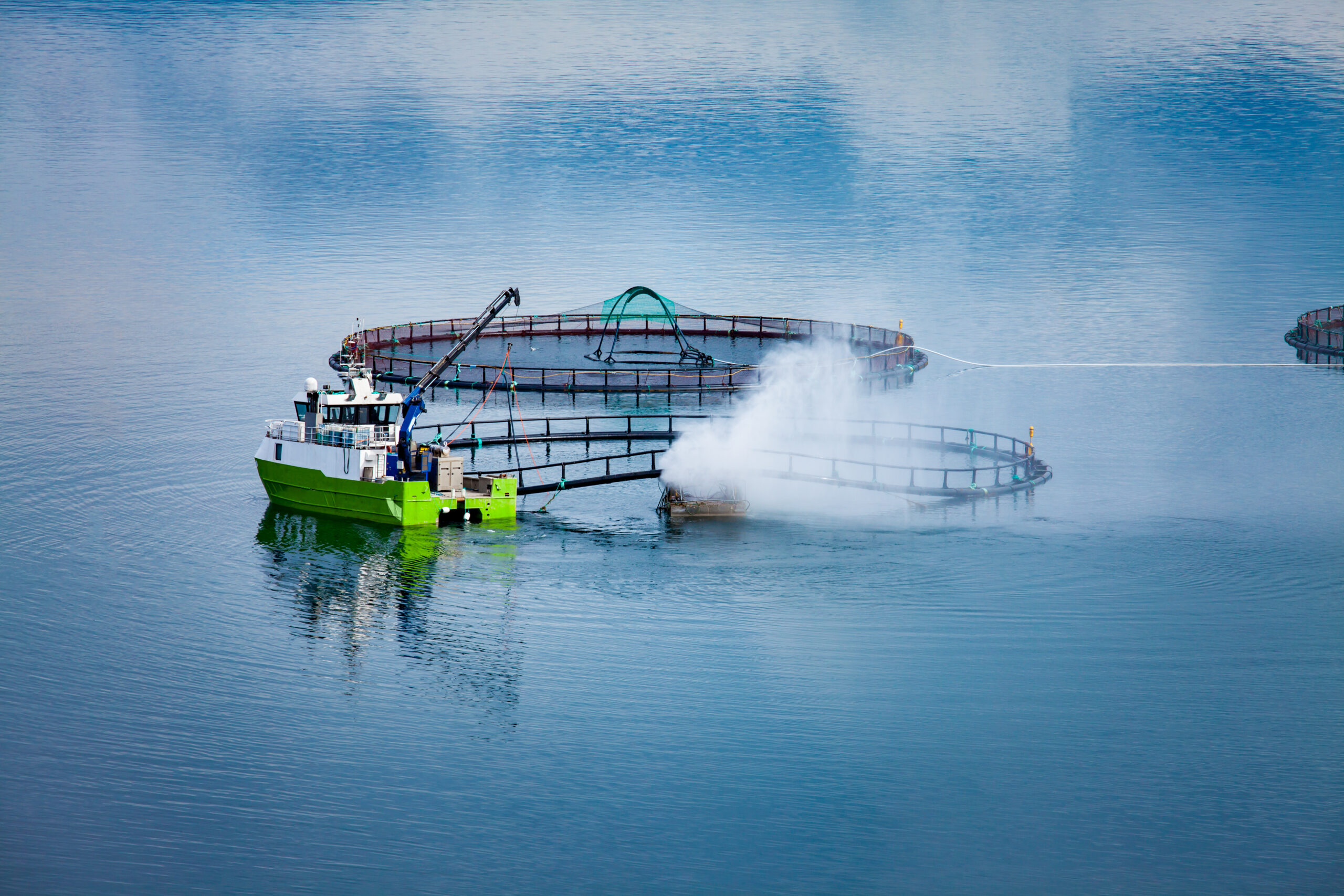La acuicultura en alta mar está en marcha. La cría sistemática en jaulas de red ha sentado las bases, mientras que la integración de las tecnologías de construcción naval e ingeniería marina permite construir instalaciones más grandes capaces de aventurarse más lejos. El éxito demostrado de las estructuras de corrales a gran escala en la mejora de la calidad y la eficiencia está llamando la atención y empujando cada vez más la acuicultura en alta mar hacia la realidad. Sin embargo, esta expansión pone de manifiesto importantes obstáculos tanto tecnológicos como de gestión.

(1) Seguridad de las instalaciones: La principal preocupación
Los tifones suponen una enorme amenaza para las operaciones en alta mar. En un incidente, un corral marino resultó gravemente dañado, sobre todo en el lado expuesto a las olas, mientras que el resto permaneció prácticamente intacto. Esto pone de relieve un descuido habitual: el hecho de que en el diseño y la construcción iniciales no se adaptaran las especificaciones de resistencia estructural de las distintas partes de la instalación en función de su exposición. A la inversa, también demuestra que un equipo diseñado adecuadamente puede resistir las duras condiciones del mar. El corral dañado, tras las reparaciones y mejoras de diseño, sigue funcionando con éxito en la actualidad.
(2) Bioincrustaciones marinas: Un pequeño problema con grandes consecuencias
A menudo subestimado, el biofouling -organismos que se adhieren a las estructuras- es un problema de seguridad crítico. Afecta sobre todo a los soportes rígidos de las redes y puede tener tres consecuencias graves: 1) redes desgarradas y escapes de peces; 2) reducción del caudal de agua a través de redes obstruidas; y 3) aumento masivo de la resistencia. Esta tensión añadida puede colapsar toda la instalación, causando pérdidas irreversibles. Aunque el problema pueda parecer menor, el daño que puede infligir es sustancial, lo que lo convierte en un factor decisivo para la seguridad de las instalaciones acuícolas.
(3) Datos imperfectos, ensayos costosos y un mercado lento
La experiencia práctica ha puesto de manifiesto otros retos. En primer lugar, los datos medioambientales suelen ser imprecisos. Si bien puede haber datos históricos de una zona en general, a menudo se carece de información específica y localizada sobre el lugar donde se proyecta instalar el corral, como corrientes detalladas o la composición del lecho marino. En segundo lugar, las pruebas en el mundo real son increíblemente caras. Se subestima la complejidad de combinar la ingeniería marina con los equipos de acuicultura, y el desarrollo de artes de pesca a gran escala requiere más pruebas con modelos y ensayos a mediana escala antes de su despliegue completo. La elevada inversión significa que cualquier fallo tras el lanzamiento es devastador. Factores como los materiales, la estructura y el montaje de los sistemas de redes submarinas también deben estudiarse a fondo. En tercer lugar, el desarrollo del mercado es un juego largo. La comercialización de pescado procedente de piscifactorías en alta mar debe tener en cuenta las preferencias de los consumidores por el marisco fresco/vivo y su poder adquisitivo, lo que exige un desarrollo gradual de toda la cadena de suministro. Para determinar la escala de los equipos de piscifactoría también hay que tener en cuenta el reto de adaptar las grandes cosechas concentradas a la absorción del mercado, un proceso que llevará tiempo.

(4) La urgente necesidad de investigación aplicada
En la actualidad, muchas empresas están ansiosas por implantar diseños basados en la experiencia y los ideales, pero la investigación fundacional y aplicada va muy a la zaga, sin ofrecer el apoyo adecuado. Un ejemplo: la suposición de la piscicultura costera de que los espacios más grandes en los corrales siempre benefician el crecimiento y la calidad de especies como la corvina amarilla de gran tamaño. Sin embargo, estudios submarinos con sonar sobre el comportamiento de los peces revelaron que las corrientes y las condiciones a menudo hacen que los bancos se agrupen en sólo 20-30% del espacio disponible. Esta alta densidad puede provocar un agotamiento localizado del oxígeno, lo que irónicamente dificulta el crecimiento. Para solucionar este problema, más tarde se introdujeron diseños compartimentados que proporcionan un espacio de natación más adecuado. Sin embargo, determinar el espacio óptimo para densidades de población específicas requiere más investigación. En un estudio de seguimiento, un solo pez pasó 90% de su tiempo en una zona específica del corral, volviendo allí incluso después de breves salidas para alimentarse. Por lo tanto, para diseñar la escala de cría más eficiente, necesitamos una investigación más profunda y sistemática de las relaciones entre la densidad de población, el comportamiento de los bancos, las necesidades espaciales y cómo influye en última instancia el espacio en la calidad de los peces.
(5) Viabilidad económica: El factor decisivo en última instancia
La investigación puede explorar el potencial de una industria, pero su supervivencia depende de la economía. Un modelo económico de la NOAA que analiza distintos métodos de acuicultura (cerca de la costa, en alta mar, en aguas profundas) muestra escasas variaciones en los costes de los alevines y los piensos. Los principales factores de diferenciación en el coste global son la gestión y las infraestructuras. El modelo sugiere que la acuicultura de alta mar es de alta inversión y alto rendimiento. Si el pescado de piscifactoría no puede obtener un precio superior, corre el riesgo de caer por debajo del precio de equilibrio del mercado -el punto en el que la oferta satisface la demanda-, con las consiguientes pérdidas. Por consiguiente, la acuicultura de aguas profundas debe competir en varios frentes: 1) contra las mismas especies criadas con métodos más baratos; 2) contra productos acuícolas importados de tipo y calidad similares; y 3) contra sus homólogos capturados en el medio natural. Para que sea económicamente viable, es probable que necesite una ventaja de precio significativa sobre los métodos de cultivo más baratos, un coste global inferior en comparación con importaciones similares y la ausencia de competencia directa de la pesca salvaje.

